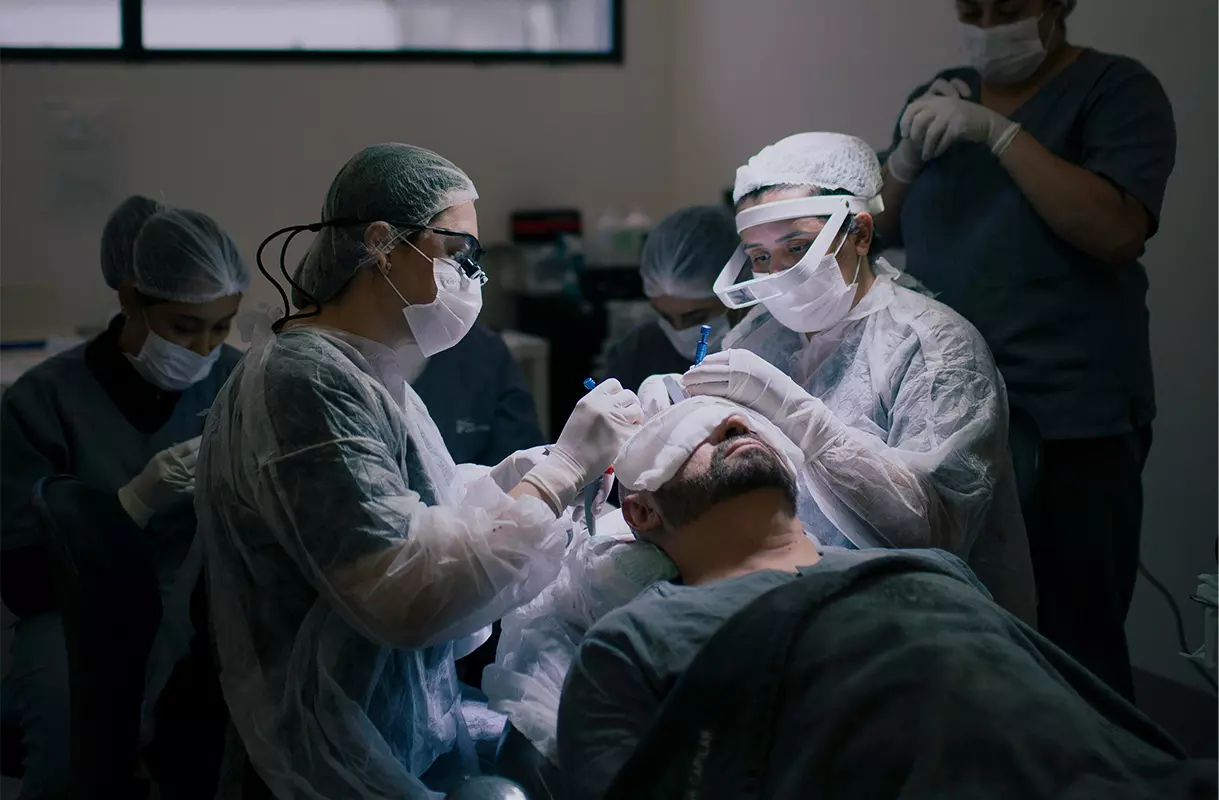Great Question! Whether you've already had a transplant and are considering another or are doing initial research on this topic, here is what you should know: We do things differently at Hair Transplant & Restoration Center.
Administering local anesthesia during the procedure is never an afterthought, which sets patients up for success during recovery. Dr. Gray uses three different local anesthetics throughout the procedure - each serving a specific purpose to ensure the patient remains as comfortable as possible for several hours. Going one step further, before you even leave our office, Dr. Gray injects a long-lasting numbing agent (used in operating rooms to reduce the need for narcotics post-op) to ensure your head is numb well into the next day. We have patients drive several hours home after their surgery - no problem.
This attention to detail for recovery results in the majority of the same feedback from patients. First-time patients are understandably anxious beforehand but afterward frequently comment, "Oh, that was nothing." And usually, patients who have had a prior transplant at another clinic expect pain and discomfort during their procedure. However, they are pleasantly surprised that their experience at HT&RC was very different from their previous hair transplant.
Beyond making patients as comfortable as possible, we provide instructions about caring for the new grafts at home that patients must follow closely. But high level, this is a general timeline for recovery after a hair transplant.
Immediately After/First Night
Before you go home, Dr. Gray injects Exparel. Exparel is an expensive, long-lasting numbing medication surgeons use in operating rooms to help reduce the need for narcotics after surgery. For our purposes, Dr. Gray injects Exparel to numb you well throughout your first-night post op after your surgery.
Immediately after surgery, the recipient and transplanted area will be cleaned, and the donor area will have a dressing (which you will leave on until day one post-op). Examining closely, the sites where Dr. Gray worked will look slightly red, shiny, and swollen, and could have small spots of blood. You will also see new little hairs standing up where the follicles were implanted. For FUE cases, the donor area will have small red holes where the grafts were harvested, which will generally heal within 2-3 days. Over the dressing, Dr. Gray will place a special cap to help keep moisture in, which is essential for healing.
Dr. Gray provides prescriptions for pain, sleep, and antibiotic medications before surgery, which you will start the first night. Before you leave our office, we will also provide a bag of supplies, including a neck pillow, special sprays and detailed post-operative care instructions to follow during the week. You will begin spraying the recipient area the first night.
If you want to wear a hat, ONLY a loose-fitting traditional baseball cap is permitted, but be careful. Anything tighter will put the new grafts in jeopardy. Loose hoodies are fine the first night. We encourage you to sleep in a recliner chair at about 45 degrees head up or with your head elevated which will help the fluid to drain backward.
Day 1 – 6 After Surgery
In your first week, you’ll be healing and following post op instructions at home. We encourage our patients to lay low. You may see some redness and irritation in the area where the implant was performed, but this heals quickly in most patients. Most of our patients return to their everyday lives within a few days.
It takes approximately 6 days for the newly implanted follicles to “anchor” or take hold and become permanent, which means they are slightly vulnerable for the first few days and can be dislodged if bumped, rubbed, or touched harshly. You will sleep, bathe, and dress slightly differently for the first 6 days to avoid dislodging a graft.
We recommend you continue to sleep “propped up” at a roughly 45 degree angle with something supporting your neck (we provide a travel neck pillow) for as long as needed. This is not only for support and to keep your head from moving or bumping anything in the night, but sleeping at that angle also helps discourage post-operative swelling.
Patients may experience some degree of swelling in the forehead, eyes, and cheeks during this period which usually begins around day 2-3 and resolves completely by day 7. The swelling is somewhat unpredictable and subjective, but sleeping “propped up” and avoiding long periods of looking downward (i.e. cellphone use) will help this reside quickly. For most patients, the swelling is minimal and restricted to the forehead region.
We want patients to start safely washing their hair the next day (Day 1 post-op). We provide detailed cleaning instructions that include, for example, avoiding direct water pressure from the shower head, washing by gently pouring water and shampoo over the area with a cup, and simply letting the transplanted region “air dry.” Even with good washing, the transplanted region may have a somewhat “scabbed” and red appearance during this time – which can be easily concealed with a hat. Button-down shirts are also recommended during this period to avoid pulling anything over your head and rubbing the grafts. Patients will also continue to use sprays as directed.
Pain is minimal during this period, but we recommend continuing prescribed medications if needed.
Day 7 – 10 After Surgery
The redness and irritation should subside within this time, with the FUE cases most people don’t show any sign of a procedure in their donor area, but the immediate healing process goes more slowly for some patients than others.
By day 7, the grafts begin anchoring and are secure enough that you can return to sleeping, bathing, and dressing normally.
During this period, patients should wash more vigorously, and the transplant should begin to look like a clean “buzz cut” – with the scalp clear of scabs and debris and the new transplanted hair clearly visible. There will likely be some lingering “pinkness” of the scalp, but this will gradually fade. You are pretty much back to “normal life” (aside from stitches in the donor area if a FUT procedure was performed) during this period. Stitches are removed around day 10-14. The post-op period is truly “complete” at this point.
2 Weeks After Surgery
Hair follicles often enter the resting phase and start losing their hair shafts. You may notice the short hair shafts that were transplanted are shedding, which is a normal part of the hair growth cycle. The follicle grafts are still healthy. After a dormancy period, the hairs will begin to regrow from the transplanted follicles in 4 to 5 months.
1-3 Months After Surgery
The transplanted hair may continue to shed up to a month post-surgery, and you likely won’t see new hair growth right away. Stay positive. New growth is only a few months away.
During this time, it’s normal not to see any change at all—or even worse, to notice hair falling out faster than before. You may feel like your hair looks even thinner than before you had the procedure.
This can be alarming, but it’s all part of the process. What’s happening is that your hair follicles are returning to life after briefly going dormant during the extraction and re-implantation procedure. As they do, they’re pushing out old, pre-existing hairs so they can start growing new ones. That’s why you’re noticing some hair loss.
As more time passes, the distinction between the transplanted and native hair areas on your scalp will disappear, and you probably won’t be able to tell where your native hair ends and the transplanted hair begins.
3-6 Months After Surgery
This is where the initial growth period usually starts. The first new hairs coming in may be unusually thin and fine or have a lighter color or no color at all—and again, this is not a cause for worry. Subsequent hair growth will be thicker and more substantial.
It’s also not unusual for hair growth to be patchy and uneven initially because the follicles may have been implanted during different periods in their growth cycle, so they’ll heal and regrow at different rates.
During this period, you might notice some red spots on your scalp that look like acne. These might be unpleasant, but they’re a good sign—it means new hairs are trying to come through. Some new hairs may get stuck beneath your skin like an ingrown hair, causing the red spots.
6-9 Months After Surgery
At our clinic, we usually see approximately 60% to 80% of new hair growth around the beginning of this period—starting at about the six-month mark. However, this can vary widely depending on the patient and the technique used to implant the grafts.
The growth rate can depend on the method your surgeon used and how successful they were in placing each graft, which is why Dr. Gray performs each procedure by hand—to ensure the best results for every patient.
You may continue to see occasional pimples where hair follicles were inserted. They should diminish on their own, but you can apply a warm compress to the area if either are uncomfortable.
9-12 Months After Surgery
On average, most patients see approximately 90% of their new regrowth during this period. Typically, the newly transplanted hair is fully grown in a year after the procedure.
12-18 months After Surgery
New hair may still be coming in for some patients during this time. In addition, the texture and color of your hair may continue to change as your hair follicles find their new rhythm.
It’s extremely common for hair to fall out at first, grow in patchy, and take a year or even more to see your full results. Your experience depends on your follicles, and no two patients are exactly the same.
If you have any questions about a hair transplant or the recovery period after a hair transplant, please contact our office to schedule a consultation with Dr. Gray.






